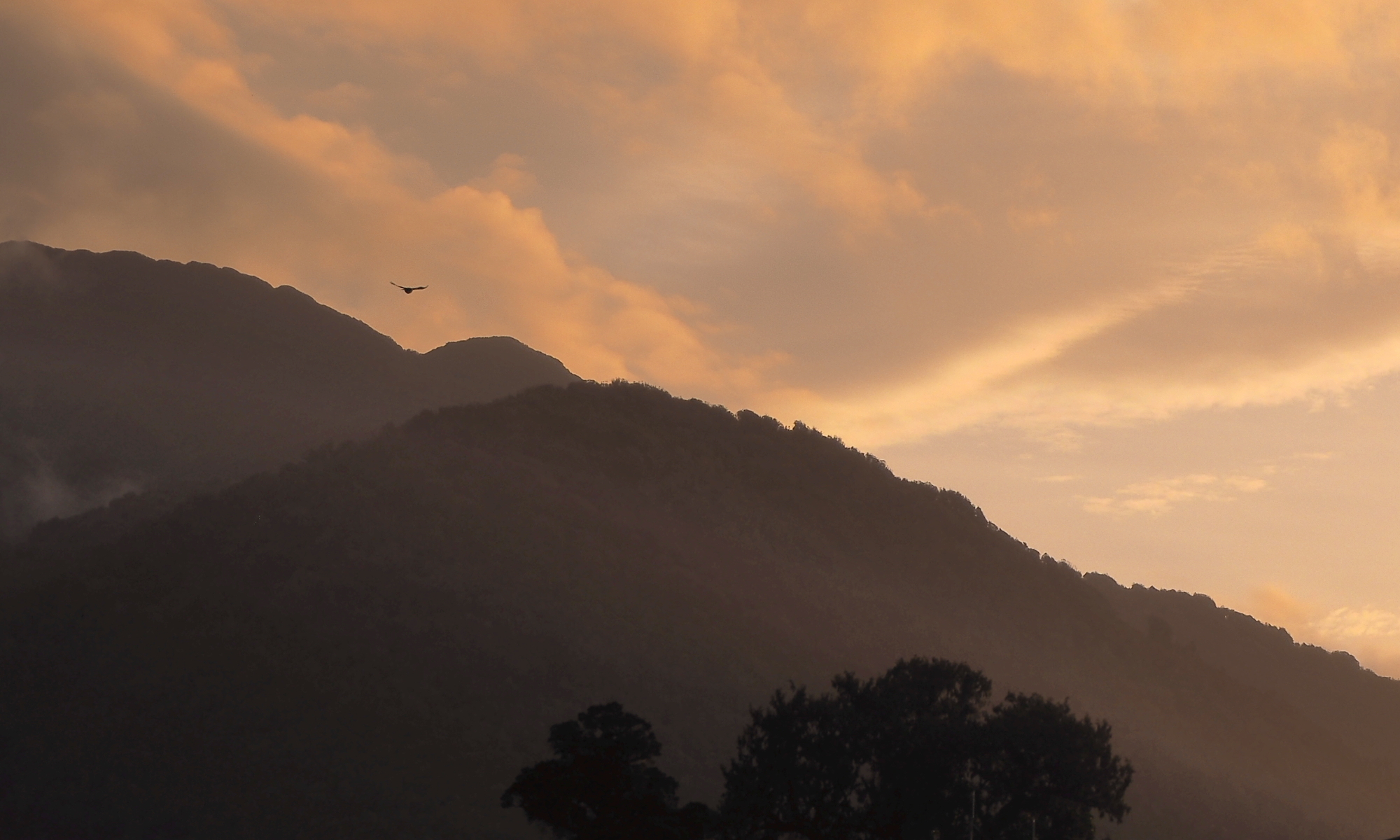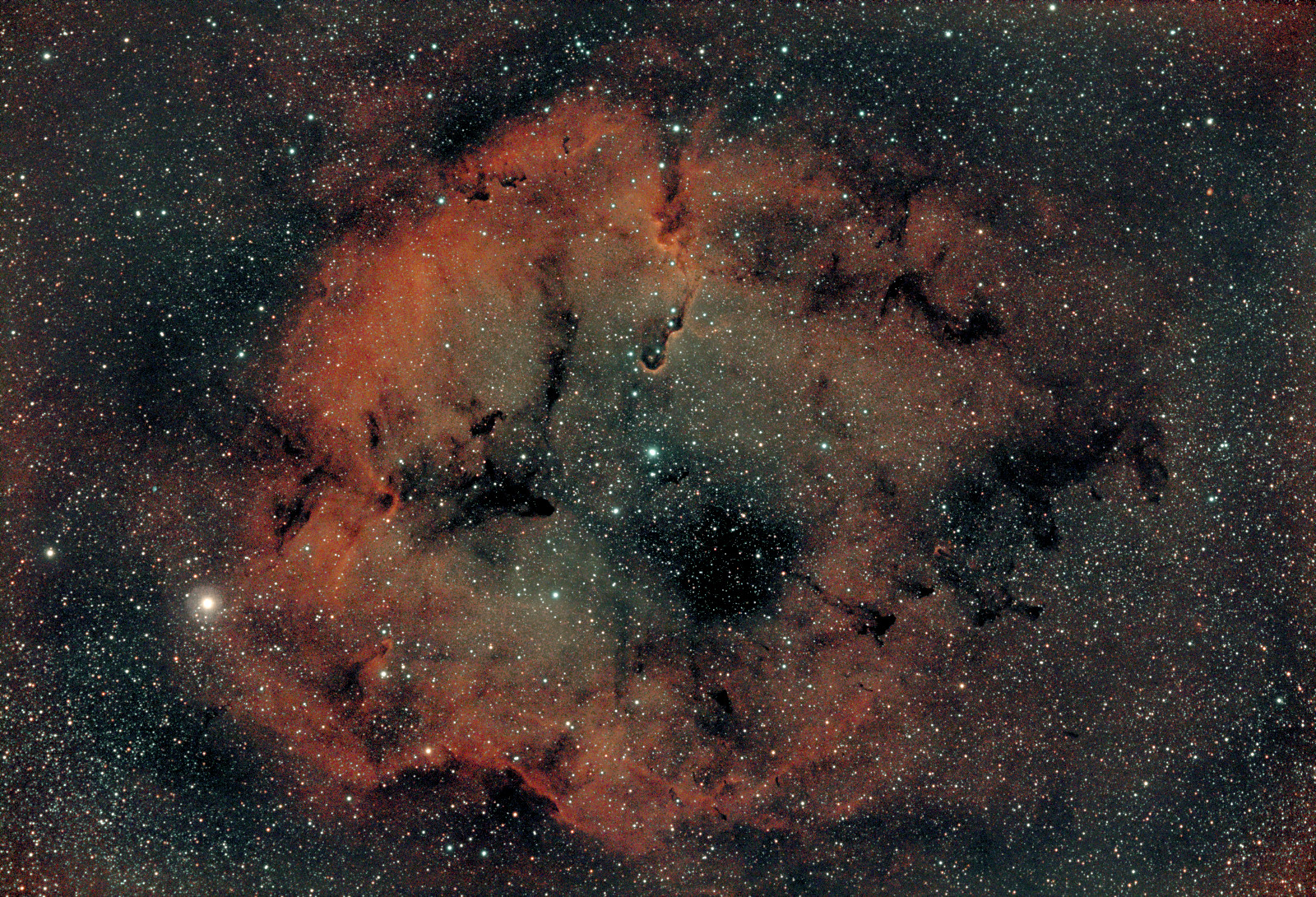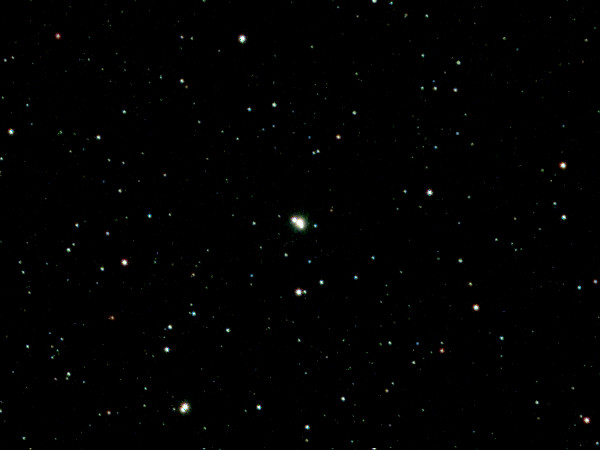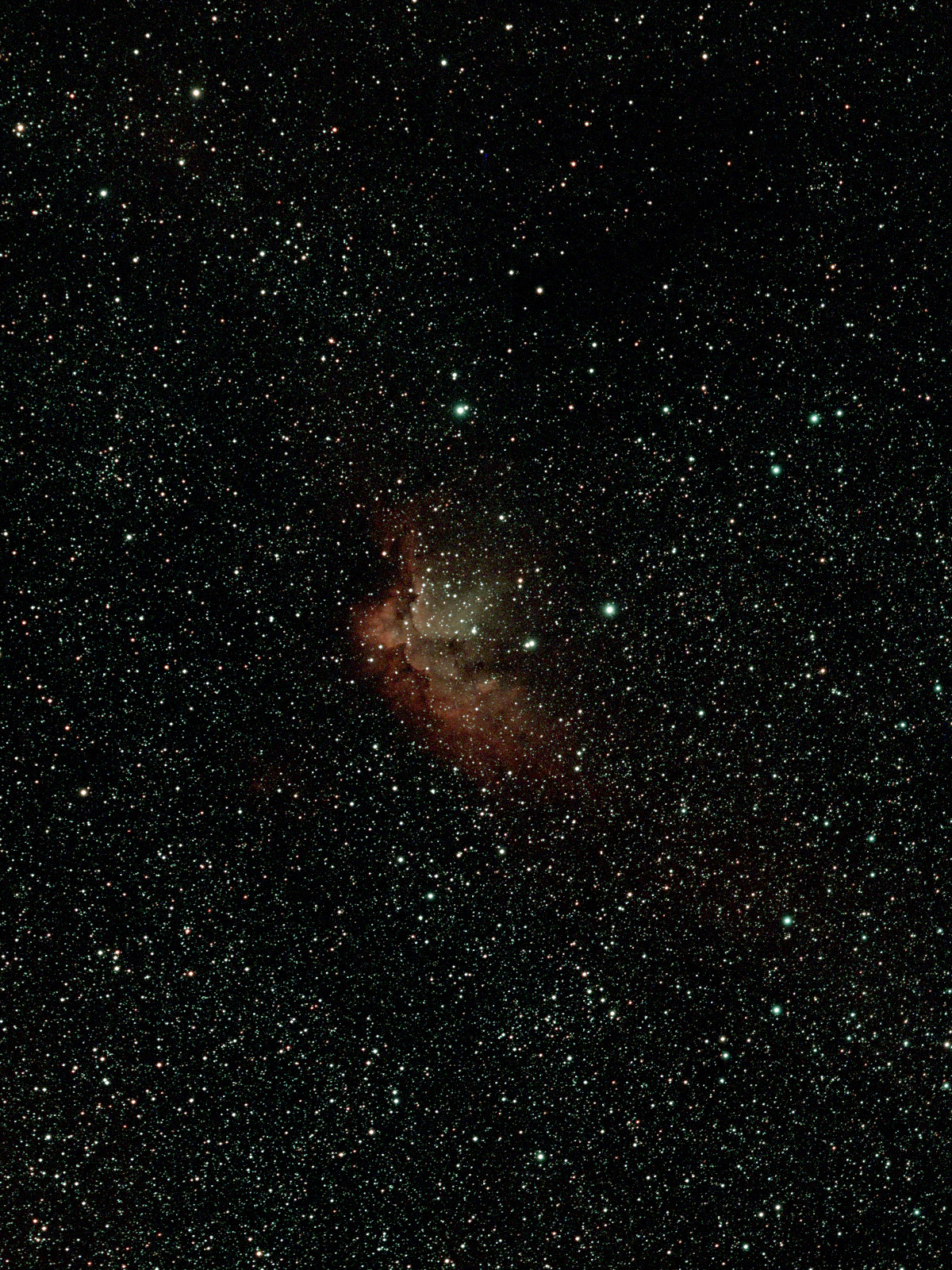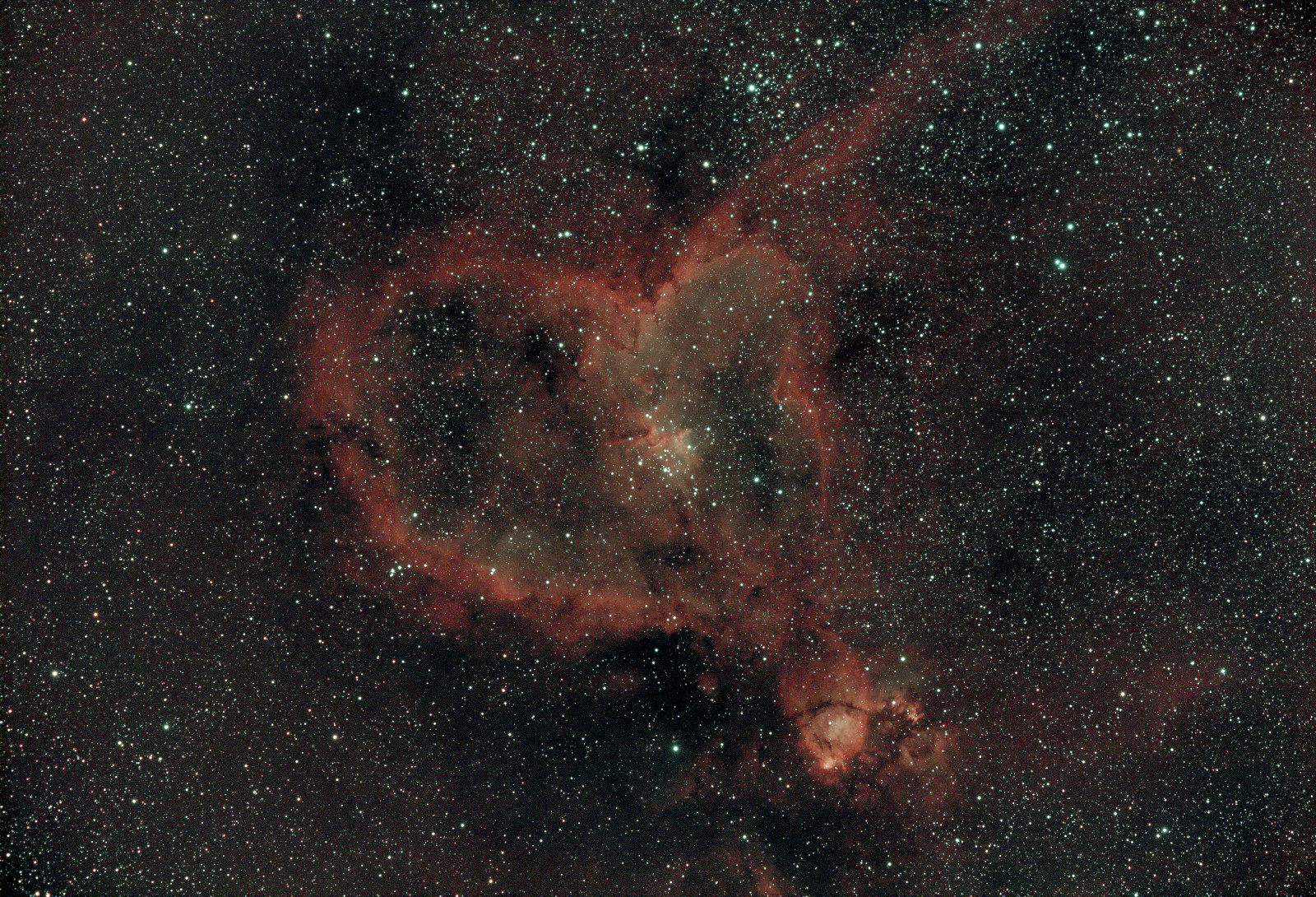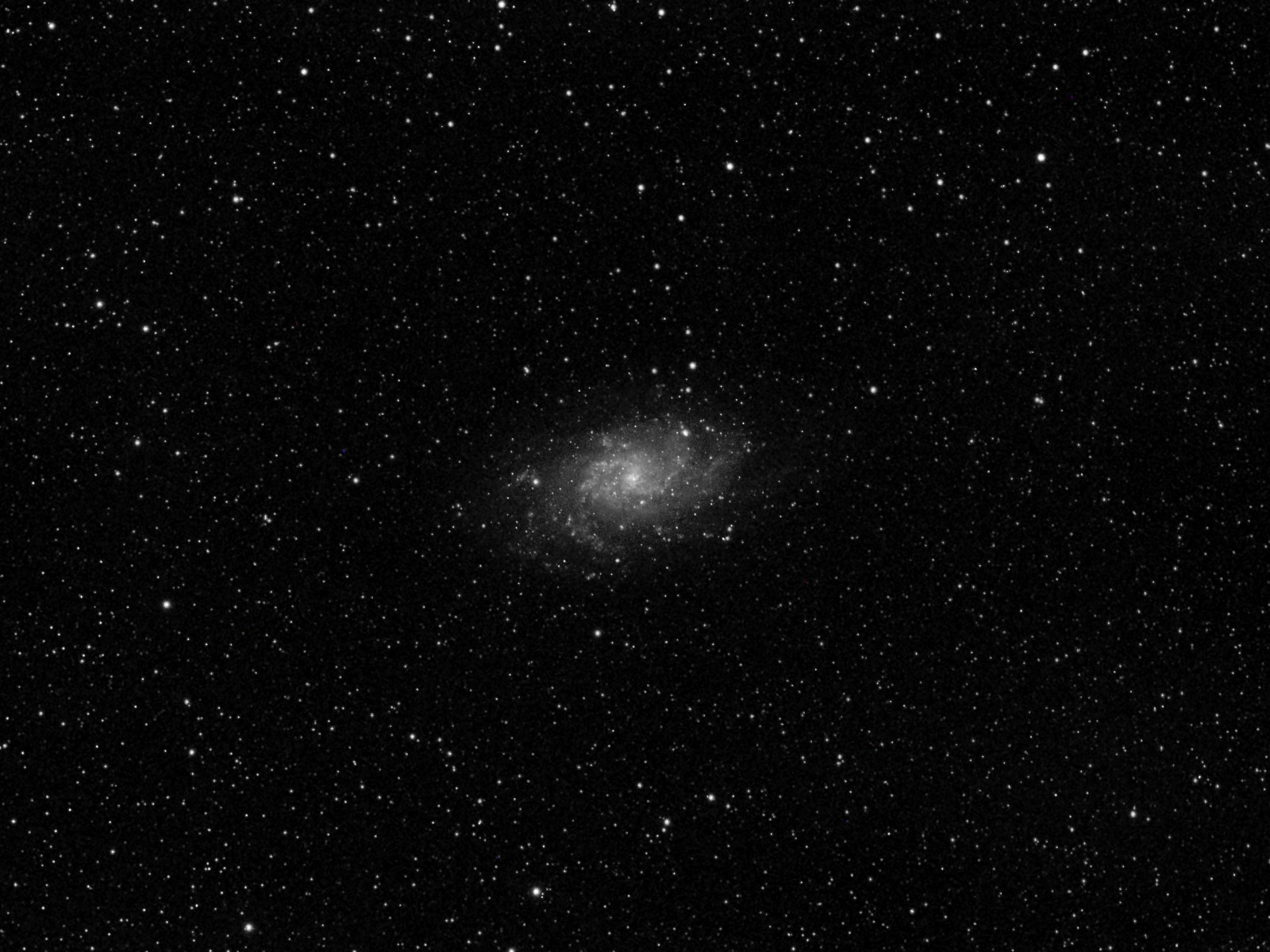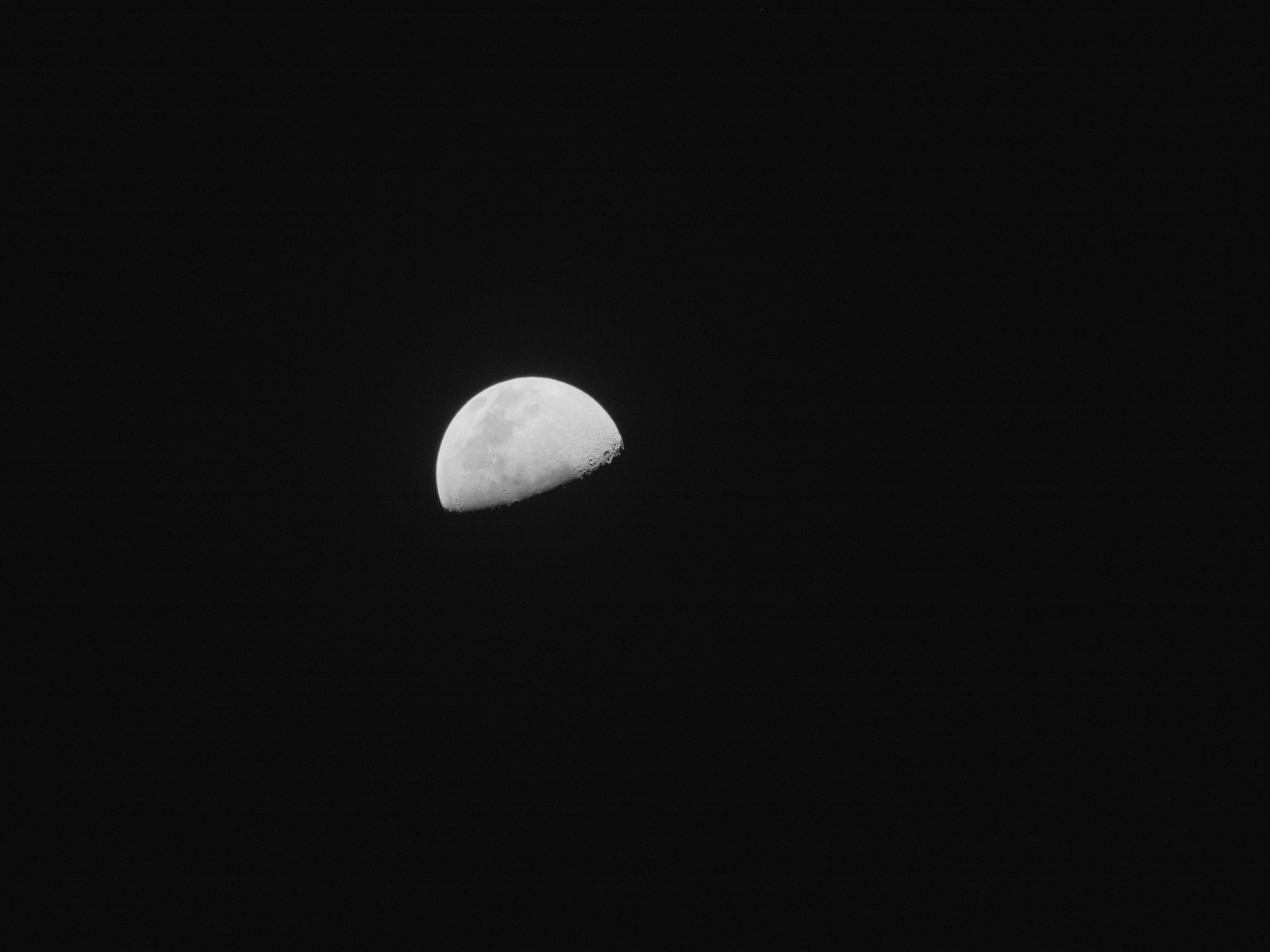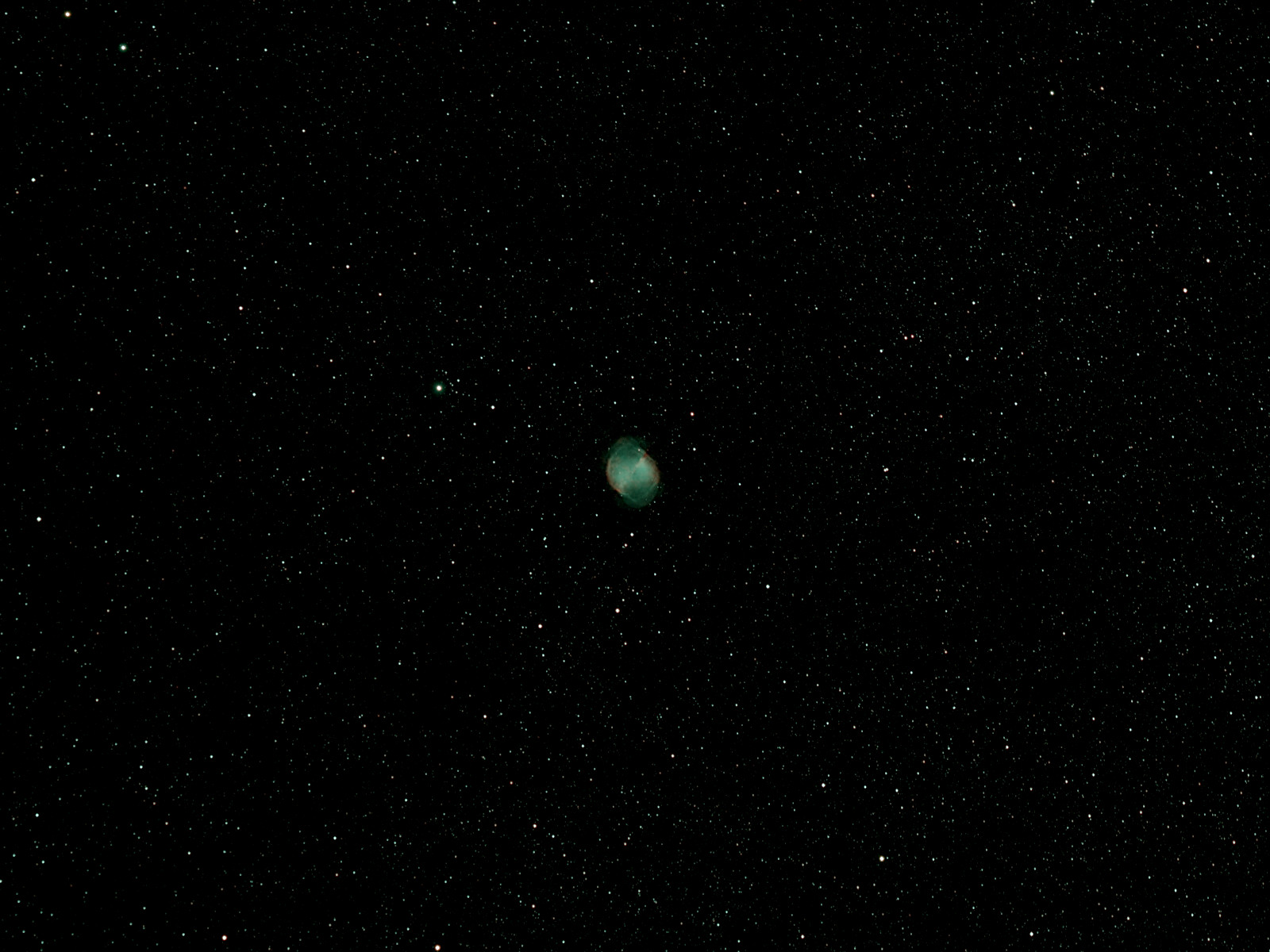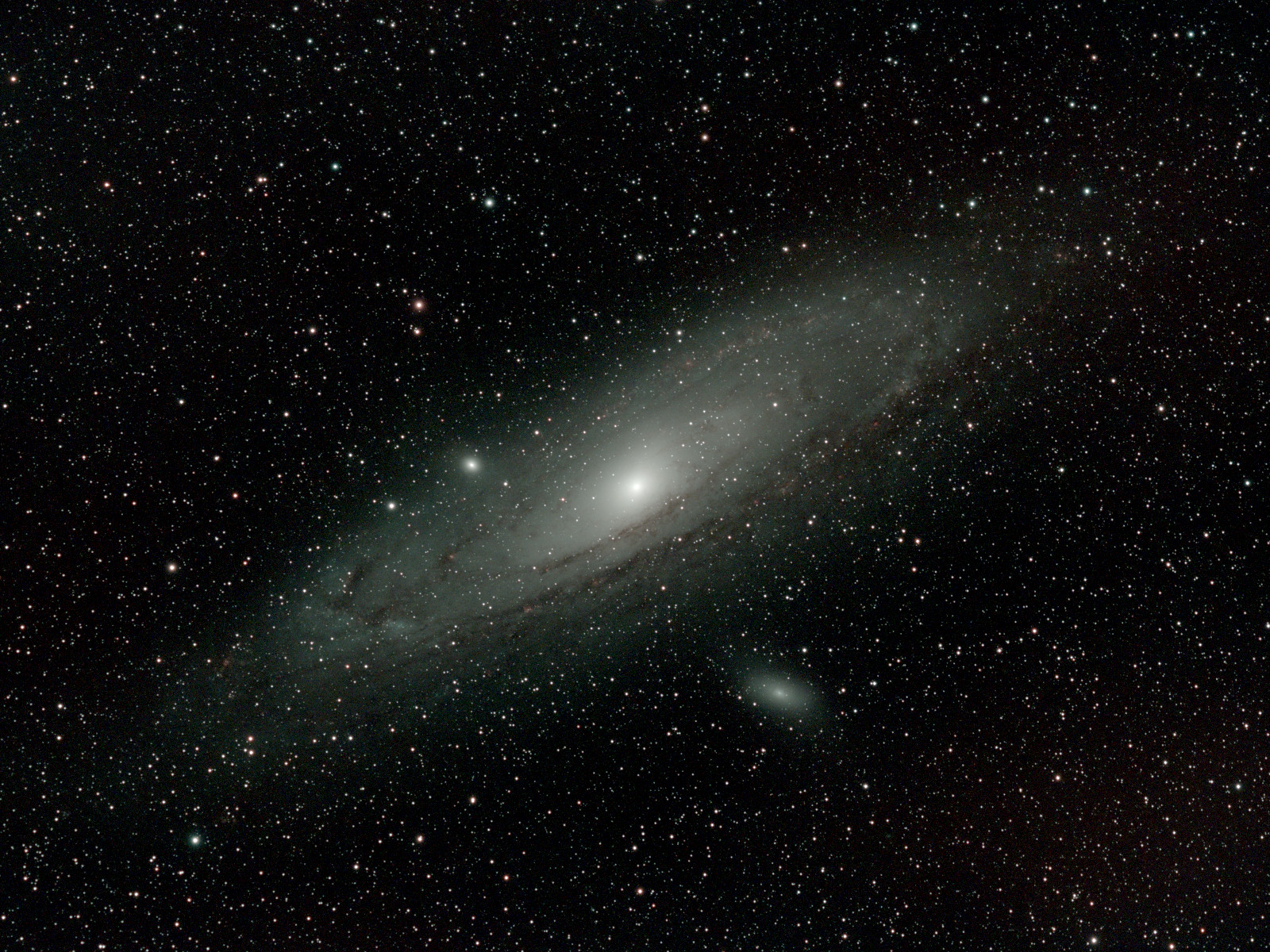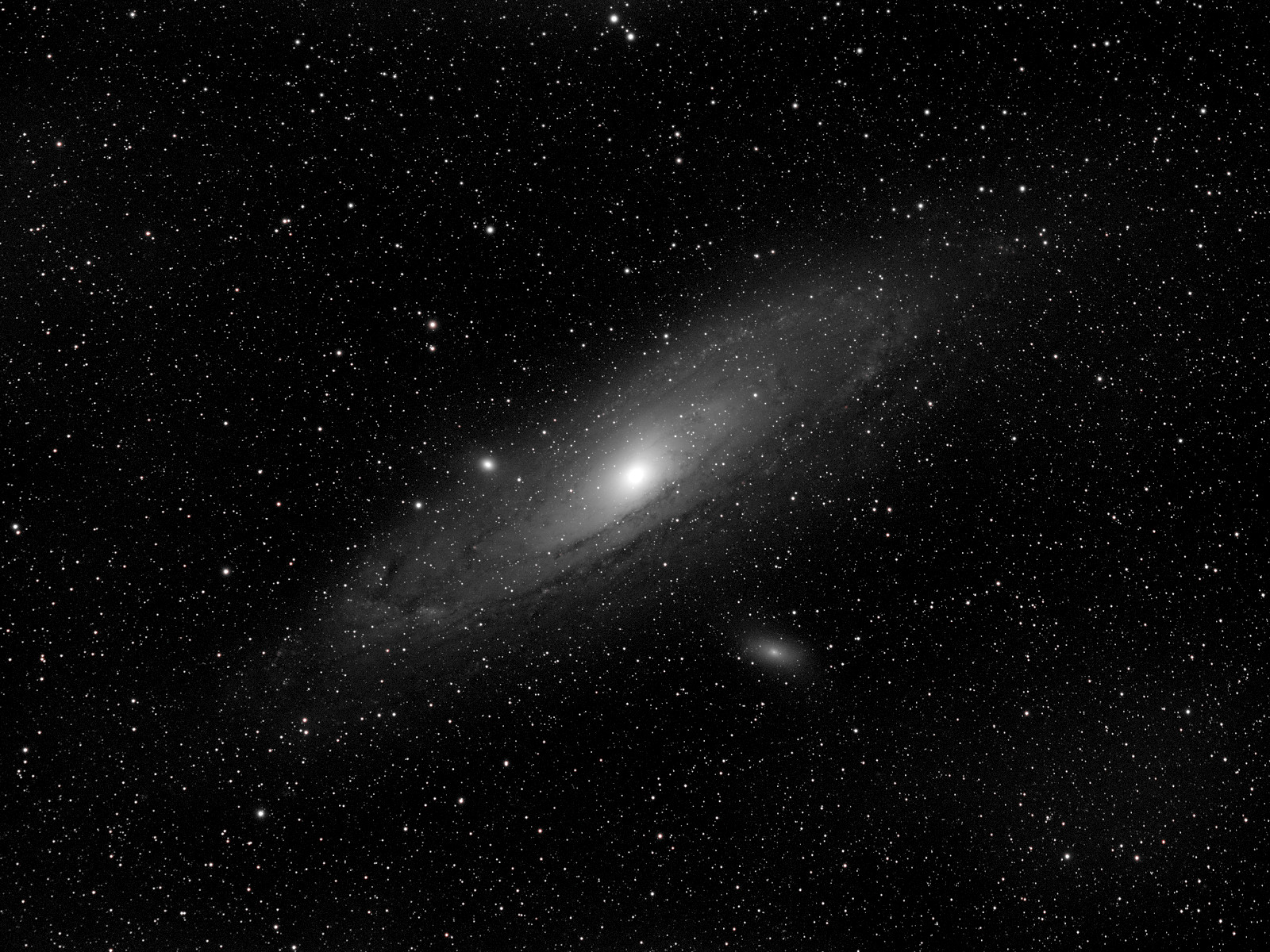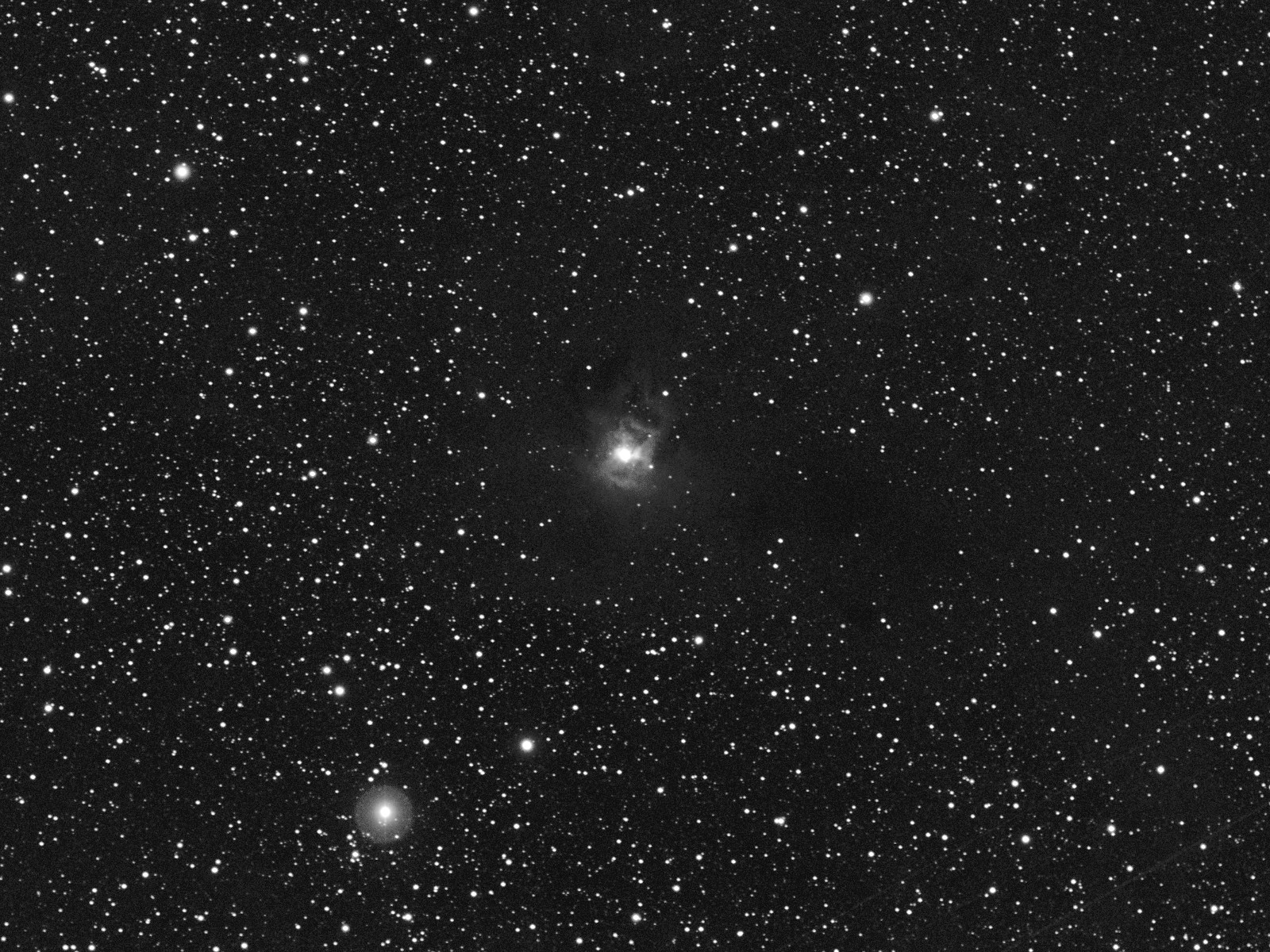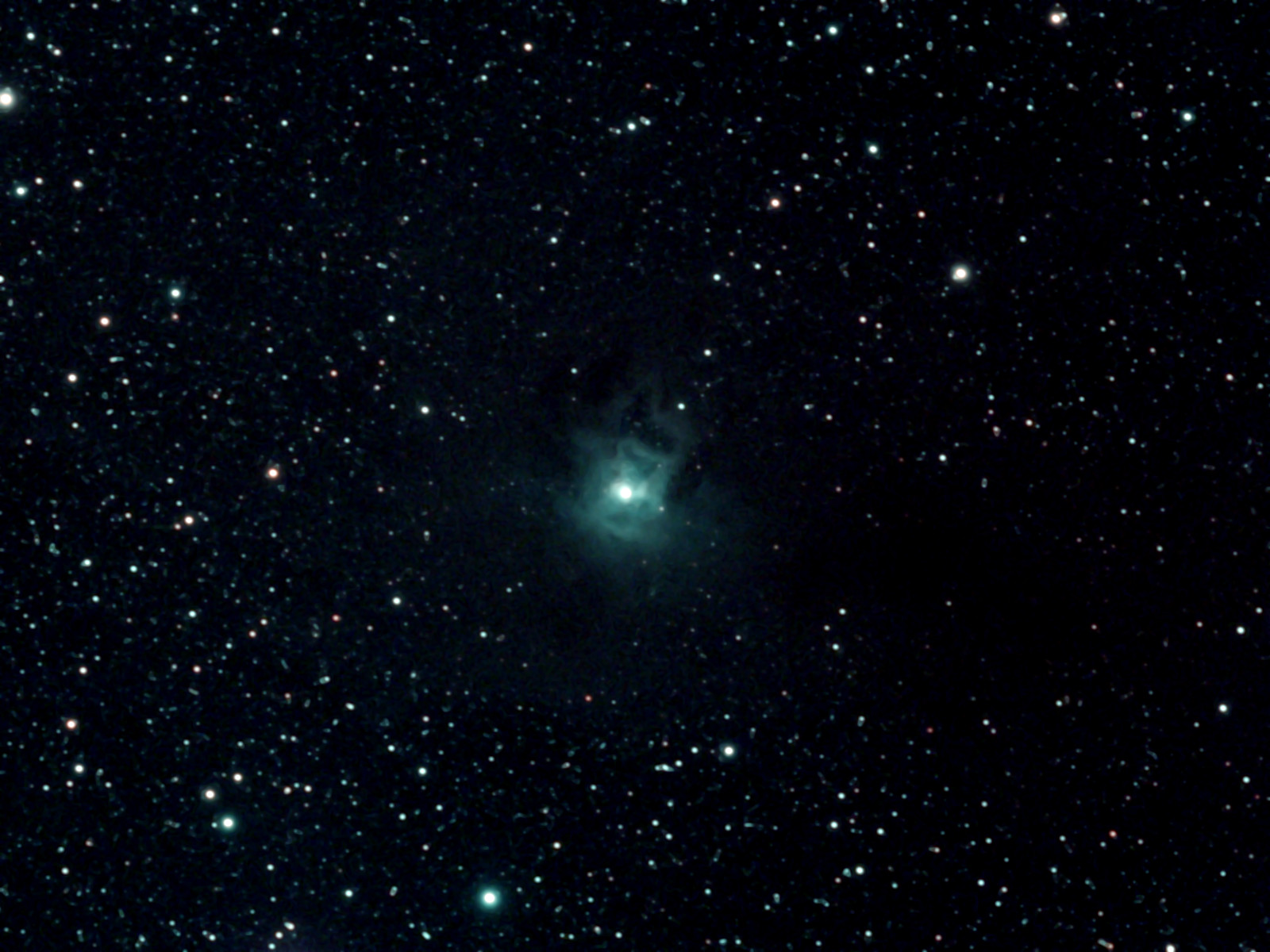I believe the elephant’s trunk is dangling down from the upper middle. This is a composite of 100 2-minute exposures; processed with Pixinsight and Gimp. Better pictures taken by more experienced amateurs with better equipment can be seen here. The full field of view here is actually known as IC 1396, and it’s part of a much larger complex. Here’s a great view of the whole complex.
There is a bright star dead center. You can’t tell in this image, but that is a group of at least three stars. Here’s the center at full resolution:
This is the combined image; once you know what you are looking for the center star does look a bit suspicious.
Here’s the center without the nebulosity, from a single 2-minute exposure:
One star is clearly separated, and there is a hint of another in the lower right. Other exposures show that split more clearly. This is at the limit of the resolution of my telescope.
